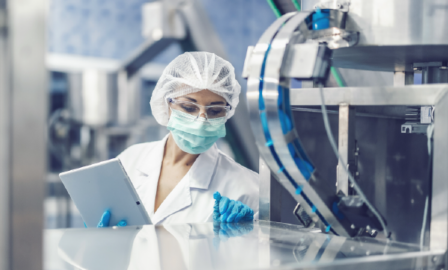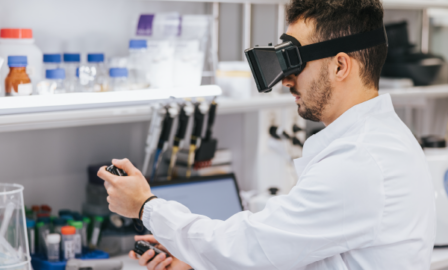How the Upcoming European Medical Device Regulations Deadlines Impact You
Changes are all around the medical device industry, especially with the upcoming European medical device regulations deadlines quickly approaching. Revenue is increasing 5% annually, growing to an estimated $800 billion within the next decade. Processes for continuous regulation of Type 1 diabetes via an artificial pancreas are being developed. Supporting the humanitarian and medical supply needs of the global COVID-19 pandemic is a priority. Adapting to challenges and finding advancements are what the medical industry is all about, but can we keep up?
On May 26, 2017, the European Medical Device Regulations (MDR) were put in place to replace the Medical Device Directives (MDD). This is not a small revision that everyone should read over; this is about as close to a complete makeover as you can imagine. With only a three-year transition plan, all medical device manufactures are expected to be in compliance with the new regulations by May 26, 2020.
European Medical Device Regulations Changes
In addition to the obvious change in name, there are a few notable changes that will impact more than a few companies in the medical device industry. Manufacturers who once avoided medical device regulation governance by creating products that had no medical purpose will no longer escape if they pose similar risk profiles as medical devices. New classifications consider products such as contact lenses, liposuction equipment, and membrane filling substances as medical devices. With this change, hundreds of manufacturers will need to get prepared by obtaining certifications of compliance. The next biggest change is that all the commercial products already on the market will need to be recertified by 2020 to remain compliant. There will not be any “grandfathering” exceptions. A complete re-certification process will take place for all devices existing under the umbrella of the MDR. In addition, post-market surveillance technical documentation is now required to be included for every product. Post-clinical follow-ups will be administered and should be done at the initiative of the manufacturer. No longer can manufacturers rely on the data from complaints and product literature.
Unique Device Identification (UDI) numbers are mandated to be assigned to each and every commercial device that can be available on its own. This UDI must be affixed to the product or the packaging to ensure continual supply chain management with increased traceability. In many cases, new labels will be required to be implemented to accommodate this new requirement. This UDI number will be used in the new, developing European Database on Medical Devices (EUDAMED). EUDAMED will be a common place of transparency for the public’s use. In EUDAMED, products will be identified by their UDI and associated with their manufacturers. Information on the device, notified bodies and certifications, clinical investigations, post-market surveillance, performance studies and other data will be stored within EUDAMED. EUDAMED will assist regulatory authorities in determination of safety and effectiveness of medical devices. As of February 2020, the implementation of the EUDAMED has been delayed to May 2022, aligning with the implementation of the In Vitro Diagnostic Regulations (IVDR).
Manufacturers outside of the EU are not evading this high surveillance. Non-EU manufacturers must assign a European Authorized Representative from the EU to partner with. This representative will be responsible for verifying that the EU Declaration of Conformity documentation has been completed and a conformity assessment has been performed. To ensure this is taking place, the MDR will enforce shared legal liability between the European Authorized Representative and the manufacturer for any defective device that is placed in the European market.
Notified Bodies will experience changes to their procedures as well. They will be required to proceduralize unannounced on-site audits of manufacturers, subcontractors, and suppliers. Moreover, notified bodies must notify competent authorities of the certificates they grant to high risk medical devices. These medical devices may be required to undergo further evaluation at the request of the competent authorities or the European Commission. In such cases, a scientific analysis may be performed by an expert panel to assess the safety and effectiveness of a device if reasonable concern exist. All notified bodies must be recertified under the new MDR before they will be able to continue issuing certificates.
Notified Bodies
With an excess number of devices in need of certification, the biggest concern becomes the availability of the certifiers. Currently, there are 55 notified bodies in the EU that all must be re-designated under the MDR or the IVDR if they desire to maintain designation. Not only must the notified bodies become re-designated under the MDR, they must also become designated to particular product codes. It was expected that 20 notified bodies would be designated by the end of 2019 in preparation for May 2020, but as of February 6, 2020, only 11 had completed the application process and received designation. Four notified bodies have announced they will not be seeking designation under the new MDR/IVDR. Limited availability to notified bodies becomes a predominant concern for manufacturers in need of certifications to place their devices in the European market. In better news, applications for all but the notified bodies who will not be seeking designation under the MDR/IVDR have been submitted. All product codes have been addressed between all the applicants. Unfortunately, the designation process is known to be lengthy. BSI, who received designation in 2019, stated the process took about 26 months.
With so few notified bodies available, the workload will be tremendously increased. Considering many products that were not previously considered medical devices will now be seeking certification in addition to all the medical devices already on the market and in the pipeline, it seems impossible to keep up. Notified bodies will be required for about 70% of devices as opposed to the 30% previously required. In the 2019 Regulatory Affairs Professionals Society and KPMG survey, 91% of responders stated the availability of notified bodies is the top barrier for EU MDR compliance.
European Medical Device Regulations Potential Results
The EU contributes 27% of the global medical device market. With such heavy influence, growth in the medical device industry can possibly be dependent on the EU directly. As a result of the new and strict regulations, some manufacturing companies are withdrawing from the EU market. Meinrad Lugan, CEO of BVMed believes the deficiency of notified bodies will result in an increase in price of medical devices. Price increases will not be the only impact consumers may feel. Products may become temporarily unavailable due to a lack of manufacturers or pending certifications.
Although these changes have been known since May 2017, transition is difficult. While no extensions are expected to be granted, there is a slight transition plan in place. Devices currently certified can continue to be placed on the market until the current certificate expires or until May 2024, whichever comes first. Over the transitional period from 2017 until now, certifications were allowed to be issued under the old MDD as long as certain criteria were met to ensure compliance past May 2020. These devices can only be granted short term certificates that would expire no later than May 2024 and post surveillance is required to be conducted in accordance with the new MDR. It may not seem like a lot, but at least consumers will still have some devices available for purchase.
Conclusion
In preparation for implementation, Dr. Bassil Akra, member of the medical health science board at TÜV SÜD suggests, “Read the regulation(s) first, don’t wait for somebody else to explain them to you.” Many changes are happening at a rapid pace and it is best for all manufacturers to be prepared for what is expected. Understanding the changes and implementing systems to meet the requirements prior to assessments will be crucial in expediting the process and gaining certification rapidly.
Subscribe to Clarkston's Insights
Contributions by Ashley McNeil.



